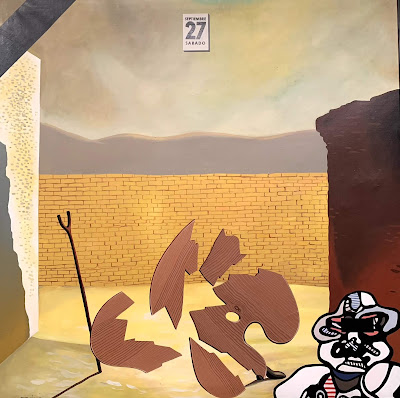For outsiders visiting Spain, it’s often hard to remember that the nation isn’t that far from a fascist past. Francisco Franco, dictator for nearly four decades, only died in November 1975. A great many Spaniards living today still remember his times.
That always strikes me when I hear a Spaniard talk about “the war”. That doesn’t mean the Second World War, as it would for a Brit or a Frenchman or a German. Generally, it means the Spanish Civil War, which brought Franco to power.
 |
| Equipo Crónica in the Reina Sofía museum |
Within the collaboration, they used simple, plain colours, not merely to underline messages that are often intense to the point of brutality, but so as to avoid the touches and undertones of paint that would distinguish one painter from the other. They are truly collective works.
Franco remained a brutal authoritarian right up to his death. That release, for Spain and beyond, as much as for himself, came on 20 November 1975. But less than two months earlier, on 27 September, five young men were murdered – ‘executed’ is just a euphemism – by firing squad, on the orders of a court martial, countersigned by the dictator.
 |
| A salute to the last victims of Franco’s killing machine |
The walls are, apparently, each in the style of an artist admired by the collective, but I can’t identify them.
In the foreground is a painter’s palette, broken into five pieces, one for each of the victims and perhaps a symbol of the impotence of art in the face of such criminality.
 |
| Palette broken into five pieces Face with eyes blacked out A wall for the victim to stand against Mourning stripe at top left The date at the top |
A reminder many of us outside Spain badly need, too. In Hungary. In Poland. In Italy, for pity's sake. And, far from least, in Brexit Britain.
Our memories of the dangers of fascism are over 70 years old, from the Second World War, rather than little over 40 as in Spain. And we’re becoming forgetful. Toying with notions that should have been consigned to the history books.
At our own serious peril.
No comments:
Post a Comment